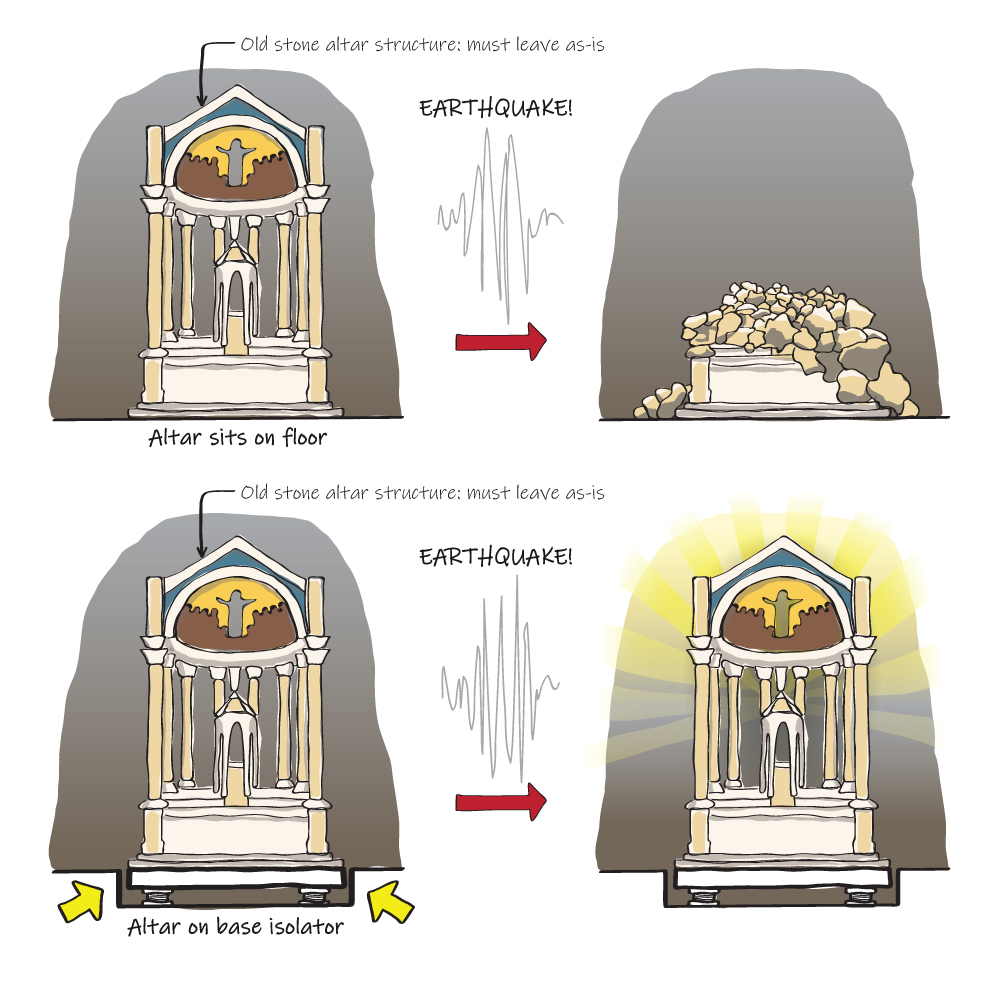Problem Statement
When the Cathedral Parish of Saint Eugene’s in Santa Rosa, California purchased an antique Baldacchino sculpture in early 2014, they didn’t fully realize the implications of installing an 80,000-pound, unreinforced, brittle marble structure in an earthquake-prone area. Besides the challenge of holding the structure’s 500 marble pieces together under intense seismic shaking, the tight physical constraints of the altar area where the sculpture was to be installed made for limited access during construction and minimal room for the sculpture to move during an earthquake. Additionally, the Parish also requested that none of the structural modifications or retrofits be visible from the front of the structure. ZFA’s challenge was to find a way to provide resistance to seismic forces while maintaining the beauty of the 1920s-era Baldacchino.
How ZFA Added Value
Custom Base Isolation Solution
Given the constraints, a team of ZFA engineers determined that a base isolation system—devices installed under a structure that allow the ground to move while reducing its effect on the structure above—was the best option to reduce the imposed seismic demands on the structure and limit the amount of intrusive retrofit work required.
The difficulty with this solution was a Goldilocks-style conundrum: the sculpture was too large to use components designed to isolate equipment and too small to use components intended for buildings. Therefore, ZFA devised a unique trio of devices to isolate the structure, including three friction sliders, two rubber bearings, and four viscous dampers. The friction sliders and rubber bearings were specially designed for the project, and ZFA worked closely with two different manufacturers on an iterative design solution that carefully tuned each of the components to the mass of the sculpture.
Seamless Integration of Structural Reinforcing
The base isolation provided a way for the structure to remain relatively still when the ground below it shakes. But the stacked-stone construction still required positive connections between the marble pieces to stay intact in an earthquake. Knowing that no visible bracing was permitted, connections between the marble pieces were designed with fiber reinforced polymer (FRP), thickened epoxy, and epoxy dowels, all of which were hidden between stones or on the back of the structure. Additionally, shaped plywood ribs overlaid with FRP were used to stiffen the upper portion of the half-dome. None of the structural enhancements were visible from the front of the structure, creating a well-tied structure that looked exactly as it has for the last 100 years.
The Result
ZFA’s main priority on this project was to give the Parish a solution that allowed them to install a priceless antique artifact in their cathedral knowing that it had been designed with consideration of the region’s infamous seismic activity. Understanding the Parish’s concerns and using them as a guiding light through the engineering process, ZFA was able to derive a unique, custom solution for this exceptional challenge. After a thorough third-party peer review of the structural design, the system and sculpture were approved for construction. The Baldacchino sculpture now enhances the beauty and spirituality of Saint Eugene’s Cathedral for the next century.

